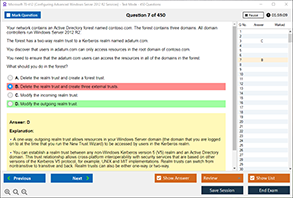Introduction
In the world of telecommunications and networking, analog modems have played a crucial role in enabling internet connectivity and data transfer over telephone lines. Before the advent of broadband and fiber-optic technologies, dial-up internet was the standard, relying on analog modems to establish connections. These modems required a specific type of connector to interface with telephone line sockets, ensuring seamless communication over the Public Switched Telephone Network (PSTN).
At DumpsQueen Official website, we understand the significance of knowing the right connectors for various networking and telecommunication purposes. This blog delves into the type of connector used to connect an analog modem to a telephone line socket, explaining its design, functionality, and importance in networking infrastructure.
Understanding the Function of an Analog Modem
An analog modem is a device that facilitates communication between a computer and a network through standard telephone lines. It converts digital signals from the computer into analog signals that can travel over telephone lines, and vice versa. This process enables internet access, fax communication, and data exchange over traditional telecommunication networks.
To function effectively, an analog modem must be properly connected to a telephone line socket, requiring a specialized connector designed to handle analog signal transmission. This connector ensures a stable and reliable connection, allowing seamless data transfer between the modem and the network.
The Connector Used for Analog Modems
The primary connector used to connect an analog modem to a telephone line socket is the RJ-11 connector. This connector is the industry standard for telephone lines and is widely used for both residential and business telephony applications.
The RJ-11 connector is a small, modular plug that fits into the telephone port on both the modem and the wall socket. It has a simple yet effective design that ensures a secure and stable connection for voice and data transmission. The connector features a plastic latch that locks it into place, preventing accidental disconnection.
How the RJ-11 Connector Works
The RJ-11 connector operates by transmitting analog signals between the modem and the telephone network. It consists of a set of conductive pins that establish an electrical connection between the modem and the telephone line. Typically, an RJ-11 connector has two or four wires, which are used for transmitting and receiving signals.
When a modem initiates a connection, it sends a signal through the RJ-11 cable to the telephone network. The network then processes the signal and establishes a communication link with the intended recipient, such as an Internet Service Provider (ISP) or another modem on the receiving end.
Installing and Using an RJ-11 Connector
Setting up an analog modem using an RJ-11 connector is a straightforward process. Here are the steps involved:
-
Connecting the Cable: One end of the RJ-11 cable is plugged into the modem's telephone port, while the other end is inserted into the telephone line socket on the wall.
-
Securing the Connection: The plastic latch on the connector ensures that the cable remains securely in place, reducing the risk of accidental disconnection.
-
Testing the Connection: After establishing the physical connection, the modem can be tested by dialing a number to check for a dial tone and verify connectivity.
Common Issues with RJ-11 Connections
While RJ-11 connectors are reliable, users may sometimes encounter issues when connecting analog modems to telephone line sockets. Some common problems include:
-
Loose or Damaged Connector: Over time, RJ-11 connectors may wear out or become loose, leading to poor connectivity. Replacing the cable or connector can resolve this issue.
-
Faulty Telephone Line: If the telephone line is not functioning properly, the modem may fail to establish a connection. Testing the line with a standard telephone can help identify the problem.
-
Interference and Signal Noise: Electrical interference from other devices can affect the quality of the analog signal. Ensuring proper cable routing and minimizing interference sources can improve performance.
Alternatives to RJ-11 Connectors
Although RJ-11 is the standard connector for analog modems, some alternative connectors have been used in specific applications. These include:
-
RJ-14 Connector: Similar to RJ-11 but with additional wiring to support multiple phone lines.
-
British Telecom (BT) Connector: Used in the United Kingdom as an alternative to RJ-11 in certain telephone systems.
-
RJ-45 Connector: Often used for Ethernet connections but can be adapted for telephony in some cases.
The Role of Analog Modems in Modern Networking
Despite the widespread adoption of high-speed internet technologies, analog modems and RJ-11 connectors continue to be relevant in certain industries. Some use cases include:
-
Rural and Remote Areas: Analog modems provide connectivity in areas where broadband infrastructure is limited.
-
Point-of-Sale (POS) Systems: Many retail systems still rely on analog modems for transaction processing.
-
Industrial Control Systems: Some industrial equipment requires dial-up connections for remote monitoring and control.
-
Emergency Backup Communication: Organizations maintain analog modem connections as a fallback option in case of broadband outages.
Conclusion
The RJ-11 connector remains the standard interface for connecting analog modems to telephone line sockets. Its simple and effective design ensures reliable data transmission over telephone networks, making it an essential component in legacy and niche applications. Although modern broadband technologies have largely replaced dial-up connections, RJ-11 connectors continue to serve critical functions in various industries.
At DumpsQueen Official website, we recognize the importance of understanding networking components and their role in telecommunications. Whether dealing with legacy systems or exploring backup communication options, knowing how RJ-11 connectors work can be invaluable in maintaining effective network connectivity.
Free Sample Questions
1. What type of connector is commonly used to connect an analog modem to a telephone line socket?
A) RJ-45
B) RJ-11
C) USB-C
D) Ethernet
Answer: B) RJ-11
2. What is the primary function of an analog modem?
A) Convert digital signals into optical signals
B) Convert digital signals into analog signals for transmission over telephone lines
C) Connect wireless networks
D) Transmit data over fiber-optic cables
Answer: B) Convert digital signals into analog signals for transmission over telephone lines
3. Which issue can affect RJ-11 modem connections?
A) Weak Wi-Fi signals
B) Faulty telephone lines or interference
C) Lack of Bluetooth pairing
D) Incorrect Ethernet configuration
Answer: B) Faulty telephone lines or interference
4. In which scenario might an analog modem still be used today?
A) Streaming high-definition videos
B) Connecting to cloud-based data centers
C) Providing internet access in rural areas
D) Managing a Wi-Fi network
Answer: C) Providing internet access in rural areas



